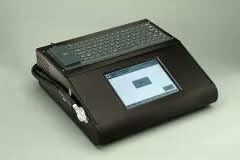There are many reasons why the breath test results in any particular case might be unreliable. One of these reasons is the breathing pattern itself. This type of defense might apply where the breath test evidence ticket (OD-80) indicates “refused” or “invalid sample” or displays results that vary from one another.
Let’s take for example, a case where there is a .08 followed by a .10 and a .11. These results would satisfy the Michigan Administrative rules, but obviously there are three different breath test results in this case. Between them, there is a difference of .03. In a case like this the testing officer might be of the opinion that there was a “weak blow,” for one of tests. However, this subjective opinion is not supported by the science of breath testing, or by the objective “opinion” of the DataMaster.
The reason this statement must be true, and the officer’s “weak blow” opinion flawed, is that all three tests have met the DataMaster’s programmed sample acceptance criterion. If this were not true, then DataMaster machine would not have printed results; in other words, no number would have been reported. Thus, if the DataMaster’s sample acceptance parameters are not met, then the DataMaster would have prompted the operator “refused yes/no.” Had the operator pushed “yes” there would be a refusal printed. If “no,” then a new sample would have had to be provided by the driver, and unless this new sample met the DataMaster’s sample acceptance criteria, then a new ““refused yes/no” message would have been displayed. The third possibility is that the breathing pattern caused the slop detector to trigger, thereby causing the DataMaster machine to produce an “invalid sample” error message. It should be noted that while the manufacturer makes this claim, this third “invalid sample” cause has not been subjected to sound scientific study.
On the other hand, if the sample acceptance criteria are met, and if we accept the popular paradigm for breath testing, then there exists a high degree of assurance that what is being tested in the sample chamber is in fact deep lung air. This supposition forms the lynch-pin of breath testing. This is because deep lung air is thought to be at equilibrium, and therefore is thought to represent accurately what is in the blood. If this were not true, then the amount of alcohol measured in one’s breath would be irrelevant to the central question in drunk driving case – did the consumption of alcohol impact the driver’s ability?
Turning back to the sample acceptance criterion, there are four of them, and these are reflected in the graph displayed here (which was produced by NPAS, the manufacturer of the DataMaster).
On this basis it is evident that when breathing into the machine, a test subject must have maintained the minimum flow rate (1), then, while meeting this minimum flow rate, must have provided a MINIMUM of 1.5 L (3). Finally, the rate must have fallen below the minimum (4) while not triggering the slope detector (2), meaning the slope leveled off (as represented by blue line). The leveling off again suggests deep lung air has been expelled into the machine. Once all four are met, the sample chamber is closed, and a final reading is taken. This final reading is reported on the evidence ticket.
So, the question that obtains in a case where there are several different test results is this: what if the test subject had blown a fourth or fifth time? Well, it is entirely possible, if not entirely probable, that the result would have been below the legal limit, making this person not guilty of the crime charged.
This is a very real possibility because what we have here in this hypothetic case is a perfect representation of the amount of variation in breath test results that can be attributable to breathing pattern alone. This is the subject of the peer review science journal article by Dr. Dennis Simpson. This paper shows that breathing pattern can produce as much as a .04 degree of difference between blows.
When there is a large difference in test results then such a person should be considered a poor candidate for breath testing, and they should be taken for a blood test. Otherwise, the risk of wrongful conviction is quite high.
Get a FREE confidential CASE EVALUATION on your Michigan OWI/OWVI/DUI by calling (248) 594-4554, or filling out this consultation request form. Call now, there’s no obligation!

{ 4 trackbacks }